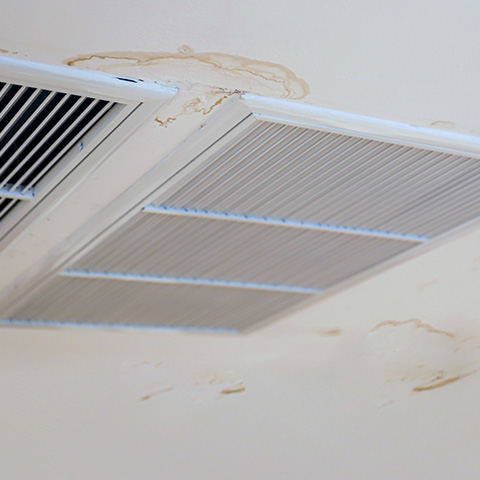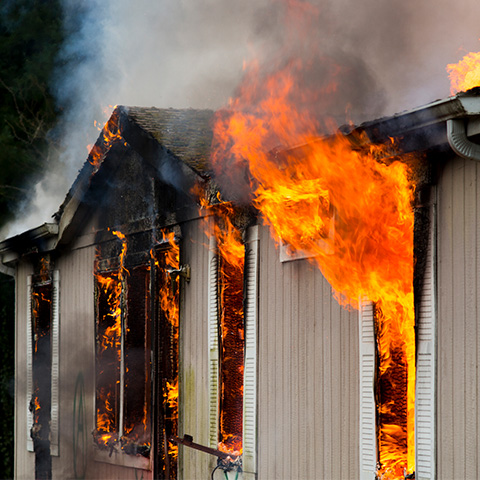
Wind & Storm Damage Restoration in Twin Falls, ID
24/7 Storm Damage Repair Services
Has your property been damaged by heavy rainfall, hail, flash flooding, high winds, a tornado, or a fallen tree? At Magic Valley Restoration & Construction, we are standing by ready to provide comprehensive wind and storm damage restoration in Twin Falls and the surrounding areas. At a moment’s notice, we can dispatch a highly trained crew to arrive on the scene and begin working to repair your property.
Our team understands the urgency of storm damage, which is why we prioritize fast response times. This swift action not only minimizes the damage to your property but also reduces the stress on homeowners. We employ advanced techniques and state-of-the-art equipment to ensure each restoration is seamless and comprehensive. Our dedication to quality service means we won’t leave a site until your home is restored to its former condition.
If the issue can’t be resolved right away, we can provide board-up and tarping services to prevent further damage to your property. Serving Twin Falls and the surrounding areas, we ensure that your home remains protected until we can address the underlying issues. After thoroughly inspecting the damage, we will provide you with a full damage assessment and a plan for restoring your home back to normal.
Why Choose Our Storm Damage Restoration Company in Twin Falls:
- We are locally and family owned
- We are licensed, bonded, and insured
- We are IICRC and EPA certified
- We provide complete property reconstruction services
- We include a one-year warranty on all completed jobs
- We are available 24 hours a day, 7 days a week
- We provide a damage assessment
Call (208) 215-7607 or contact us online for reliable wind and storm damage restoration services in Twin Falls.
Identifying Storm Damage on Your Roof and Siding
If a large storm system has just moved through the area, or it has recently been windy where you live, you may find yourself wondering if your home has incurred any damage – particularly your roof. While winds at speeds of 70 to 90 mph typically result in roof damage, even gusts of 50 mph can wreak havoc on a roofing system. Of course, wind is not the only thing that can damage your roof. You might also have hail damage or water damage. Regardless of the nature of the damage, it’s important to call for repairs as soon as you notice the signs of storm damage.
Proper identification of storm damage can preempt larger issues. Water infiltration is a significant concern, as hidden leaks can result in extensive mold growth and structural weakening over time. Also, it's crucial to recognize other subtle signs, such as minor dents or displacement in shingles, which can deteriorate and worsen if left unattended. Taking these early steps to identify potential damage ensures your home remains a safe haven for your family.
Key Indicators of Storm Damage to Look For:
- Missing shingles
- Water infiltration
- Loose debris
- Dents and cracks on shingles
- Lifting shingles
- Dented or broken gutters and downspouts
- Granule loss
- Ice dams
- Moisture issues in attic
- Water stains on ceilings and walls
Fast-moving winds, pelting hail, and other flying debris can also cause significant damage to siding materials. If you notice any splits, chips, cracks, holes, or breaks in your siding, you should call for immediate repairs to prevent any water damage and mold issues from developing behind your siding. Our experienced team is here to repair or replace your roofing and siding so that you can restore the beauty of your home and refortify it against the elements.
Safeguarding Your Twin Falls Home Against Future Storms
As Twin Falls is located in a region prone to severe weather events, it's essential for homeowners to take proactive steps to protect their properties from future storms.
One effective measure is to invest in high-impact resistant materials that can withstand harsher conditions. Many modern roofing and siding products are designed specifically to endure the rigorous challenges posed by intense weather patterns. Homeowners should also consider reinforcing their windows and doors with storm-resistant options to provide an added layer of defense.
Beyond structural upgrades, regular inspections and maintenance are vital components of storm preparedness. Establishing a routine check-up schedule can help identify potential problem areas that might exacerbate during a storm, such as clogged gutters or loose roof tiles. During these inspections, it’s beneficial to ensure that trees and landscaping near the home are well-maintained to prevent any branches from becoming dangerous projectiles during high winds. Taking these precautions can significantly reduce the risk of damage and ensure your home remains resilient throughout the storm season.
Navigating Storm Restoration & Insurance Claims
Experiencing storm damage is undoubtedly stressful, and navigating the subsequent insurance claims process can add to that burden. However, understanding the proper steps to take can simplify the process and enhance the chances of a favorable outcome.
The first step is to document all damage immediately. Take photographs and videos of both external and internal areas of your home, highlighting the impact of the storm. Detailed records will support your claim and provide an essential visual reference when reporting to your insurance company. Once the documentation is complete, review your insurance policy to clearly understand the coverage provisions and exclusions. Familiarizing yourself with these details will aid in setting realistic expectations for your claim.
Another crucial step is consulting with a restoration company like Magic Valley Restoration & Construction, which can assist in evaluating damage and providing repair estimates. Their knowledge can be invaluable when communicating with insurance adjusters, offering an authoritative perspective of the required repairs. Partnering with a trusted restoration service not only accelerates the recovery process but also ensures that your home restoration aligns with the high standards of quality and thoroughness.
Frequently Asked Questions About Storm Damage Restoration
What Should I Look for When Choosing a Storm Damage Restoration Company?
Choosing a restoration company requires careful consideration. It's imperative to select a company that is licensed, bonded, and insured. Look for certifications such as IICRC and EPA, which demonstrate a commitment to best practices and adherence to industry standards. Additionally, investigate customer reviews and testimonials, as they offer insights into the company's reliability and quality of service. Prioritize companies with a responsive customer service team and a proven track record of handling similar situations to ensure seamless communication and successful restoration outcomes.
How Do I Know If Storm Damage Is Covered by My Insurance Policy?
Determining insurance coverage for storm damage starts with reviewing your policy. Most standard homeowners insurance policies cover sudden and accidental damage, including that from storms, but it’s crucial to check for any specific exclusions or limitations. Contact your insurance provider to discuss the specifics of your coverage if you are uncertain. Understanding your policy guarantees you are informed when filing a claim, and it also helps in setting realistic expectations concerning potential reimbursements. Consulting with a restoration professional before filing can also offer additional insights.
Should I Make Temporary Repairs After a Storm?
Yes, making temporary repairs is often recommended to prevent further damage before full repairs can be completed. Actions such as tarping a roof or boarding up broken windows help safeguard your home’s integrity. Document these temporary fixes thoroughly and keep all receipts, as many insurance policies will reimburse expenses related to preventative measures. However, ensure that these are legitimate, necessary actions as advised by your restoration company to avoid any issues with insurance adjustments.
What Steps Should I Take After Storm Damage Occurs?
Post-storm, prioritizing safety is key. Ensure that all household members are safe and that potential hazards, like broken glass or exposed electrical systems, are secured. Document the damage extensively through photos and videos. Next, reach out to a professional storm damage restoration service to assess and mitigate damage promptly. After contacting the restoration professionals, initiate communication with your insurance provider to report and file a claim. This structured approach helps streamline the recovery process, fostering ease and promptness in returning your home to its pre-storm condition.
How Long Does the Storm Damage Restoration Process Take?
The timeline for storm damage restoration varies depending on the extent and complexity of the damage. Minor repairs, such as dented gutters or small leaks, may be completed within a few days, whereas comprehensive structural repairs or significant water damage restoration can take several weeks. Efficient project coordination and prioritization by your restoration team, coupled with effective communication with insurance providers, can significantly influence the duration. Transparent dialogue with your restoration team about timelines and anticipated completion dates provides clarity and helps manage expectations throughout the process.

Why Hire Our MVRC Team?
Committed to Delivering Quality Work


-
Top Rated Reviews
-
Licensed, Bonded, and Insured
-
1 Year Warranty On All Completed Jobs
-
Locally & Family Owned with Hands-On Owners
-
24/7 Emergency Plumbing & Restoration Services
Frequently Asked Questions
-
What Does Black Mold Look Like?You can often distinguish black mold from other types of mold or fungus by its slimy, dark-greenish color. It requires ample moisture to grow and thrive, so you will probably also notice signs of water damage around where it is located.
-
Is Black Mold Dangerous?Certain strands of black mold – Stachybotrys chartarum – can cause health problems if inhaled or ingested, especially for people with allergies, weakened immune systems, or respiratory issues. Not all types of black mold are dangerous. However, you might not be able to differentiate between one black mold and the next without laboratory testing. The safer choice is to always schedule a mold removal and remediation service whenever you spot mold in your house.
-
My Water Heater Is Leaking — What Do I Do?If it is safe to do so and you know how to do it correctly, shut off the water supply to your water heater. Next, turn off the power supply to the water heater. Both of these steps can help prevent further leaks and damage to the water heater. You might always want to loosen the drain valve and start collecting water in a bucket, ensuring no more leaks out. Call a professional to get the entire water heater inspected and repaired.
-
I Have Water in My Crawlspace — What Do I Do?Water in a crawlspace can harbor mold growth, make a cozy home for pests, and spike your water utility bills if it is caused by a leak. It can be remedied in some cases with a sump pump, vapor barriers, and dehumidifiers. Our pros can help decide the best restoration method for your situation.



